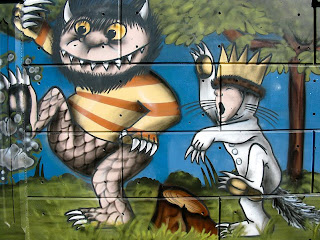The Possibility of Proprioceptive Art

Many art forms take advantage of certain of our senses. The graphic arts, such as painting and sculpture, are visual. Music and spoken-word is auditory. Performance arts are often multimodal, involving vision and audition. Writing is an interesting case, since words can be taken in visually or audibly, but the real art is in the meaning of the words as interpreted by the audience.
Proprioception is our sense of the relative locations of the parts of our bodies. As far as I know there is no art form that takes advantage of this (though there are some things going on that could be classified as this, such as the mp3 experiment at http://improveverywhere.com/2004/12/11/the-mp3-experiment/). What might a proprioceptive artwork look like?
Just as music has notation, dance has notation as well. One popular kind is called Laban notation. We can look at a notation of how to move as a work of art, where the instantiation of the art involves the audience engaging in the physical activity described.
For example, here is a simple one:
Title: Exhaustion
1. Get on the floor, on your hands and knees
2. Hang your head
3. slowly move your torso up and down
Ths idea is that performing these actions makes the audience feel some sense of what it means to feel exhausted. Certain body movements are associated with certain kinds of feelings. For example, bending your arm is associated with acceptance and joy, and extending your arm with rejection (Koch, Holland, & van Knippenberg, 2008).
It could be that dance already does this to some extent. When people observe others doing physical motion, it activates the motor parts of our brains (and possibly mirror neurons, if we have any) (Fadiga, Craighero, & Olivier, 2005).
REFERENCES
Fadiga, L., Craighero, L., Olivier, E. (2005). Human motor cortex excitability during the perception of others' action. Current Opinion in Neurobiology, 15: 213--218.
Koch, S., and Hollond, R.W., & van Knippenberg, A. (2008). Regulating cognitive control through approach-avoidance motor actions. Cognition, 109, 133-142.

Comments